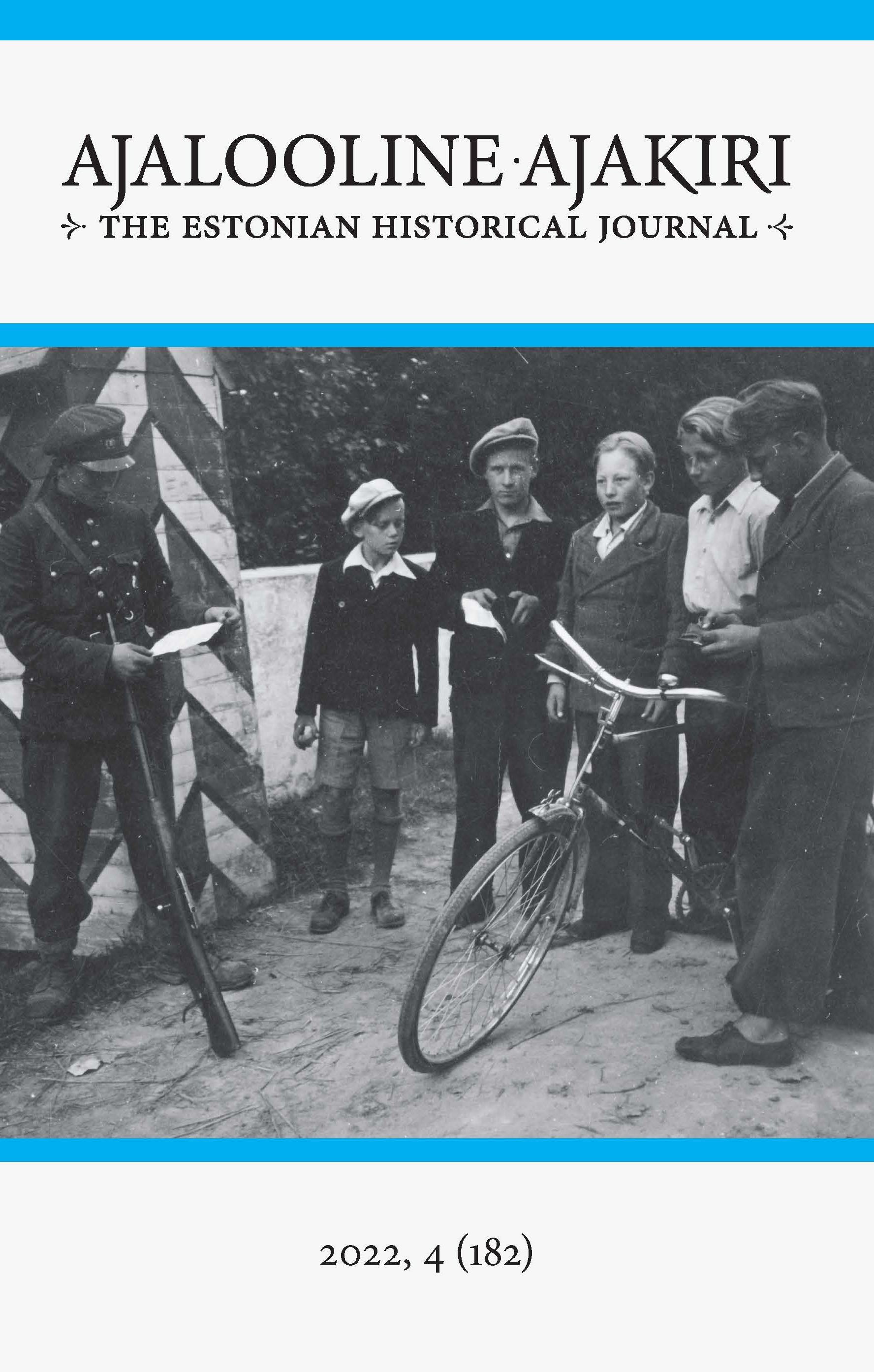Kas Suvesõda või sõjasuvi? / Summer War or Summer of War?
DOI:
https://doi.org/10.12697/AA.2022.4.03Keywords:
‘Summer War’, Second World War, German occupation in Estonia, historiography, military historyAbstract
The term ‘Summer War’ is used extensively to refer to events that took place in Estonian territory in the summer of war in 1941. This term is used in various meanings in both narrower and broader frameworks in historical literature in reference to events that took place in the summer of 1941. The objective of this article is to explain how the term originated, what it comprises, and to suggest possibilities for how it could be used.
Expatriate Estonian authors extensively adopted the term ‘Summer War’ in the 1950s and it found application as the Estonians’ ‘own war’ that is clearly distinguishable within the framework of the Second World War. More precisely, the Republic of Estonia and its armed forces existed de facto in the summer of war in 1941 and the Estonians’ ‘own war’ was fought in reality and in alliance with the German Army. There was nothing new in this and that point of view relies to a great extent on propaganda from the time of the German occupation of Estonia. The Wehrmacht was admittedly the ‘liberator’ yet the narrative of the heroism and suffering of Estonians was central. The term ‘Second War of Independence’ was already used during the German occupation to refer to this narrative. The one-sided style of this approach, which relied on propaganda directed by the occupying authorities and on the memoirs of participants, can at times create the impression as if Estonians themselves (with assistance from the Germans) liberated their country. And one can come across such an angle of approach even nowadays, regardless of the fact that without the success of the German forces, there would also have been no resistance in such form.
In summary, we could ask how to use the term ‘Summer War’ and what it should comprise. In its broader meaning, everything that took place in Estonia starting from the beginning of the war between the Soviet Union and Germany until Estonian territory ultimately fell under the control of the German occupying authorities in the autumn of 1941 (in the interests of differentiation it would nevertheless be more expedient to use the term ‘Summer War’) could fit in under the general term ‘Summer War’. The armed resistance put up by Estonians fits in under the term ‘Summer War’ in its narrower meaning. Yet here I would certainly recommend to avoid mixing up the armed resistance put up by Estonians and the offensive of the German forces. Military contributions should nevertheless be assessed in accordance with proportions.

